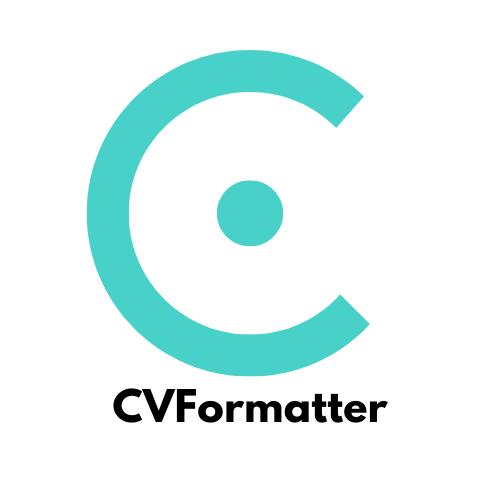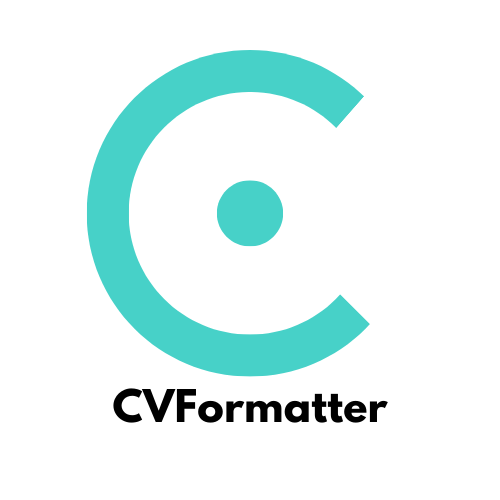The Secrets of Retained vs. Contingency Executive Search

When you look at retained vs contingency search, you find two very different ways to hire leaders. Retained search gives you a partner who works closely with you and focuses on quality. Contingency search lets several recruiters compete to fill your role fast. The model you choose can shape your success. If you want the best fit for your company, you must understand how these search types work.
Key Takeaways
Retained search means you work with one company only.
This company tries hard to find the best person for you.
Contingency search lets many recruiters try to fill jobs fast.
They look for people who are already looking for work.
Retained search finds people who are not looking for jobs.
These people often have great skills and experience.
Contingency search is quicker but may not check people deeply.
Retained search costs money at the start and during the process.
This shows you are serious and want a careful search.
Contingency search only costs money if you hire someone.
This means you pay less at first and take less risk.
Use retained search for important or hard-to-fill jobs.
It is good for secret or senior roles that need care.
Use contingency search when you need to hire fast.
It works well if you have many jobs or want many choices.
Retained vs Contingency Search: Key Differences

Exclusive Engagement vs. Open Competition
Commitment and Focus
When you pick a search firm, you want attention. In retained search, you work with one firm only. This firm puts your search first. You get a team that works just for you. They spend time and money to help you. You pay some of the fee before they start.
In contingency search, many firms can try to fill your job. Each recruiter wants to be first. You pay only if you hire their candidate. Recruiters may not focus on your job. They might have many jobs at once. If your job is hard, they may stop trying.
Tip: If you want a partner who stays until the end, retained search is a good choice.
Candidate Sourcing Approach
Retained search firms look for people not looking for jobs. These are called "passive candidates." They often have top jobs. The firm finds and contacts them. They look at the whole market, even your rivals.
Contingency firms use their own lists. They look for "active candidates." These people want new jobs now. This way is fast, but you may miss the best people.
Here is a table that shows how the two models work:
Aspect | Retained Search Model | Contingency Search Model |
|---|---|---|
Payment Structure | Pay some money before the search starts. More is paid later. | No payment until you hire someone. |
Exclusivity | Only one firm works on your job. | Many firms can try to fill your job. |
Candidate Sourcing | Looks for people not looking for jobs. | Uses lists of people looking for jobs now. |
Operational Pace | Careful and slow process with teamwork. | Fast and busy process with many jobs at once. |
Fee Percentage | About 33% to 38% of first-year pay, plus costs. | About 20% to 30% of first-year pay, only if you hire. |
Client Relationship | Teamwork with you during the search. | Less teamwork, focus on speed. |
Process Depth and Candidate Quality
Thoroughness of Assessment
You want to hire someone who will do well. Retained search uses a careful process. They learn about your needs. They check candidates with interviews and tests. They talk to people who know the candidate. This helps you find the right leader.
Contingency firms move fast. They may not check as much. They want to show you people before others do. You may see more resumes, but not all are a good fit.
Recruiters and companies look at these things to check quality:
Quality of Hire: Shows if new hires do well.
Time to Hire: How long it takes to hire.
Interview-to-Offer Ratio: How many interviews for each offer.
First-Year Attrition: How many new hires leave in one year.
Candidate Satisfaction: What candidates think about the process.
A careful process, like retained search, often gets better results.
Active vs. Passive Candidates
Retained search finds people who are not looking for jobs. These people have good jobs already. You get talent others may not find. This is good for hard jobs or top roles.
Contingency search finds people looking for jobs now. They answer ads or sign up with agencies. You can fill jobs fast, but may not get the best people.
Note: When you look at retained vs contingency search, think about the kind of people you want. Passive candidates often have more skills and stay longer.
Defining Retained Executive Search
What Is Retained Search?
Core Features
Retained executive search gives you a dedicated partner for your hiring needs. You work with one search firm that commits to your project from start to finish. This firm takes time to understand your company, your goals, and the type of leader you want. You pay part of the fee before the search begins, which shows your commitment and helps the firm focus on your needs.
A retained search firm uses a careful and structured process. The team manages the search like a project, setting clear goals and steps. They keep your needs in mind and adjust their approach if things change. You get regular updates and honest feedback. The firm also protects your privacy, which is important for sensitive or confidential roles.
Research shows that retained search mirrors how the brain manages complex tasks. The process involves self-regulation, attention control, and flexible thinking. The search team balances exploring new options and focusing on the best candidates. They keep your goals in mind and switch strategies if needed. This approach helps you find leaders who fit your company and stay for the long term.
Typical Use Cases
You should use retained search when you need to fill senior or specialized roles. These jobs often require unique skills or experience. Retained search works well for:
CEO, CFO, or other C-suite positions
Board members or directors
Confidential searches where privacy matters
Roles that need rare or hard-to-find skills
Tip: If you want to reach top talent who are not looking for jobs, retained search is the best way.
How Retained Search Works
Engagement and Partnership
You start by choosing a search firm and signing an agreement. This step creates a partnership. The firm learns about your company culture, values, and goals. You share your vision for the role. The search team becomes an extension of your business.
Research and Market Mapping
The firm researches the market to find the best candidates. They look beyond people who are actively job hunting. The team maps out where top talent works and what skills they have. They use networks, databases, and industry knowledge to build a list of potential candidates.
Assessment and Shortlisting
The search team contacts and interviews candidates. They use structured interviews, tests, and reference checks. The team looks for people who match your needs and values. They narrow the list to a small group of top candidates. You receive detailed profiles and insights to help you make the best choice.
You get a thorough, thoughtful process that helps you hire leaders who can drive your business forward.
Defining Contingency Executive Search
What Is Contingency Search?
Core Features
Contingency executive search is a flexible way to find leaders. You only pay if you hire someone. Many search firms can help you at the same time. This method is fast and rewards quick results. Recruiters try to fill your job quickly, so you see candidates soon.
You get many active job seekers to pick from. Recruiters use their contacts, job boards, and lists. They often send you several choices at once. You can compare people and pick the best one. This works well if you need to hire fast or have many jobs open.
The global executive search market is growing quickly. Contingency search is a big part of this growth. Companies want hiring that is flexible and focused on results. Contingency search gives them what they need.
Market Value (2022) USD Million | CAGR (%) (Forecast Period) | Market Position | |
|---|---|---|---|
Retainer Firms | 2,908.17 | 6.70 | Largest market share (48.93%) |
Contingency Firms | 2,328.84 | 5.99 | Second-largest segment |
Note: Contingency search is a good choice if you want to hire fast and save money until you make a hire.
Typical Use Cases
You might pick contingency search for these reasons:
You have many jobs to fill.
You need to hire quickly.
The job does not need rare skills.
You want to see lots of candidates.
You want to pay only if you hire.
Contingency search is good for jobs where speed is important. It also helps if you want to see many choices.
How Contingency Search Works
Non-Exclusive Engagement
You can use more than one search firm at once. Each recruiter tries to find the best person first. This makes things move faster. You do not have to pick just one firm. You keep your choices open.
Speed and Volume Focus
Recruiters in contingency search work fast. They use job boards, lists, and their own contacts. You get resumes quickly. This is good if you need to hire soon. The focus is on speed and sending many candidates.
Performance numbers show how well contingency search works. You can check:
Performance Indicator | Description | Measurement Focus |
|---|---|---|
Time-to-Hire | Days from job opening to offer acceptance | Speed of candidate selection |
Time-to-Fill | Days from job opening to new hire’s first day | Recruitment cycle efficiency |
Quality of Hire | Performance and fit of new hires | Effectiveness of selection |
Employee Retention Rate | Percentage of new hires who stay | Long-term hiring impact |
Turnover Rate Reduction | Decrease in employee turnover | Hiring stability |
Modern tools like AI help recruiters track these numbers right away.
Candidate Presentation
You get profiles from each recruiter. These come fast and in big groups. You look at resumes and pick who to interview. Recruiters may not check candidates as deeply as in retained search. You help choose who moves forward.
Tip: If you want to hire fast and see many choices, contingency search gives you the speed and options you want.
Payment Structures in Retained vs Contingency Search

Retained Search Fees
Upfront and Milestone Payments
With a retained search firm, you pay some money before they start. This shows you are serious about hiring. The firm then spends time and effort on your search. The total fee is split into parts, called milestones. You might pay one part at the start. Another part is paid when you get a list of candidates. The last part is paid when you hire someone. This way, the firm stays focused on your needs.
You get updates often. The firm works with you as a partner. You always know what you are paying for. This helps you trust the process. The firm stays with you until you find the right leader.
Typical Fee Ranges
Retained search fees are based on the first-year pay of the person you hire. This includes salary and bonus. Most firms charge between 25% and 33% of this amount. For example, if the pay is $200,000, the fee is $50,000 to $66,000. These numbers come from real reports, so you can trust them.
Tip: Retained search costs more at first, but you get a partner and a careful process.
Contingency Search Fees
Payment Upon Placement
Contingency search is different. You do not pay until you hire someone. You can use many agencies at once. You only pay the agency that finds your new hire. This lowers your risk and saves money until you decide.
Fee Percentages and Cost Considerations
Here are some things to know about contingency fees:
Agencies get paid only if you hire their person.
Fees are usually 15% to 25% of first-year pay.
You pay nothing before hiring, so there is less risk.
Agencies work fast to fill the job, which may affect quality.
You may see many candidates, but not all will fit.
Fees can change based on the job and industry.
Payment Model | When You Pay | Typical Fee Range | Upfront Cost | Focus |
|---|---|---|---|---|
Retained Search | Milestones (start, shortlist, hire) | 25%–33% of first-year cash compensation | Yes | Quality & Partnership |
Contingency Search | Only upon placement | 15%–25% of first-year salary | No | Speed & Volume |
If you want to save money until you hire, contingency search is flexible. If you want a partner and a careful process, retained search may be worth the higher cost.
Outcomes and Success Rates in Retained vs Contingency Search
Retained Search Results
Quality of Hires
Retained search helps you hire better people. The search firm learns about your company. They find people who fit your needs. You get a list of strong candidates. Each person is checked with interviews and tests. The firm also calls references. This helps you pick leaders who can do well.
You can reach people not looking for jobs. These people have good skills and strong work history. By talking to them, you may hire someone special.
Retained search helps you build a strong team with the right people.
Retention and Fit
Retained search firms want new hires to stay. They look for people who match your company’s values. This means your new leader will fit in well. When someone fits, they stay longer.
Studies show retained search hires stay at companies longer. You save time and money by not replacing leaders often. Your team stays strong and your company grows faster.
Contingency Search Results
Fill Rates
Contingency search is fast. You see many candidates quickly. Recruiters try to fill your job first. This means jobs get filled faster, especially when you need someone soon.
You can check how well contingency search works by looking at numbers. Here is a table with important things to track:
Metric | What It Means |
|---|---|
Fill Rate | How many jobs get filled out of all open jobs. |
Time to Hire | How many days it takes to hire someone. |
How many people say yes to your job offer. | |
Candidate Net Promoter Score (cNPS) | How likely people are to tell others about your hiring process. |
Candidate Satisfaction | How happy people are with your hiring process. |
Application Completion Rate | How many people finish the job application. |
A high fill rate means jobs are filled fast. A low time to hire means you hire quickly. If many people accept your offer, they like your process.
Candidate Experience
Candidate experience is important. In contingency search, some people feel rushed. Some do not get much feedback. Others like the fast process and many choices.
You can use surveys to see how candidates feel. Net Promoter Scores show if people would tell friends about your company. If you give a good experience, more people will want to work for you.
Happy candidates help your company look good.
Bad experiences make it harder to find talent later.
High offer acceptance means people trust your process.
Tip: Watch your fill rates and candidate satisfaction. These numbers help you hire better and build a strong team.
When to Choose Retained vs Contingency Search
Best Scenarios for Retained Search
Senior and Confidential Roles
Retained search is best for top jobs or secret searches. Use it when:
The job is important, and you must keep it quiet from others.
The current boss is not doing well, and you need a new one first.
Retained search keeps secrets safe and helps you plan better.
Niche or Hard-to-Fill Positions
Retained search is good for rare or hard jobs. You can find people who are not looking for work. The search firm uses its contacts to find the right person, even for tough jobs.
Best Scenarios for Contingency Search
Multiple Openings or Urgent Needs
Contingency search is good when you need to hire fast. Many agencies can help at once. This means you see more people quickly.
More agencies mean more choices for you.
Recruiters work fast to fill your jobs.
This way is best for quick hires and many open jobs.
Broader Candidate Pools
If you want to see lots of people, use contingency search. Recruiters use job boards and their lists to find people looking for work. You can look at many resumes and fill jobs that do not need rare skills.
This works well for fast or big hiring needs.
You get help from many recruiters and their networks.
Key Decision Factors
Budget and Timeline
Money and time matter when picking a search type. Retained search costs more at first but gives you a partner who cares about quality. Contingency search lets you pay only when you hire, so you risk less money.
Key Factor | Description |
|---|---|
Firms use pay data to help you offer fair pay. | |
Candidate Availability | Recruiters check how many people are looking for jobs. |
Hiring Timelines | Planning helps you know how long hiring will take. |
Some firms will find a new person if the first does not work out. |
Knowing your budget and time helps you choose the best way to hire.
Desired Level of Partnership
Think about how much help you want from your search firm. Retained search gives you a close partner and lots of updates. You get help with pay and picking the right person. Contingency search is faster but less personal.
If you want a partner and careful search, pick retained. If you want speed and many choices, pick contingency.
Making the Right Choice: Practical Guidance
Checking What Matters Most
How Important Is the Role?
Think about how big this job is for your company. Does this person lead a team or help your business grow? If yes, the job is very important. Ask if this leader will change how things work or handle big problems. For important jobs, you need to find the best person, not just hire fast.
What Can Your Team Do?
See what your company can do by itself. Does your HR team have time and tools to find someone? If not, you might need outside help. Use your own facts to help you choose. Here are some things that can help:
Reviews and how long leaders stay
Pay info and what others pay
How leaders make choices
Money saved or earned by past leaders
Tools that guess who will do well
Ways to score skills and fit
Maps to see where good people work
Checks to see if someone fits your values
Tools to find slow steps in hiring
AI to sort resumes and pick good people
Use your own facts and what’s happening in the market to pick the best search type.
Questions to Ask Before You Choose
How Fast and How Senior?
Ask how soon you need someone. If you need to hire fast, use contingency search. If the job is for a top leader or needs to be secret, use retained search. Think about what happens if the job stays open too long.
How Much Money Can You Spend?
Look at your money before you pick a search type. Retained search costs more at the start but gives you a partner and a careful process. Contingency search lets you pay only when you hire, so you risk less money. Make sure your money plan matches your hiring needs.
Question | Why It Matters |
|---|---|
How urgent is the hire? | Shows if you need speed or quality |
What is the role’s impact? | Tells if you need depth or speed |
What resources do we have? | Shows if you need outside help |
What is our budget? | Sets limits for your search |
Working Well With Search Firms
Setting Clear Goals
You get better hires when you and the search firm agree on what you want. Share your company’s values and what a good hire looks like. Use tech to keep everyone updated and to do easy tasks faster. This lets recruiters help you more.
Ask for updates and clear plans
Use facts to help make choices
Making Sure You Agree
Make sure your search firm knows your company and what you want in a leader. Good firms talk to many people to check if someone fits your culture. They help after hiring with training and feedback. Some use AI and big networks to find different kinds of talent.
When you trust each other and share facts, you build a team that finds better leaders and helps your company grow.
When you compare retained vs contingency search, you see clear differences in process, partnership, and results. You should match your search model to your hiring goals. Think about the role’s importance, your timeline, and your budget. Make a list of what matters most. Talk with your team before you choose a search partner. The right choice helps you build a stronger company.
Remember: The best search model fits your needs, not just the market trend.
See Also
The Impact Of Artificial Intelligence On Executive Recruiting
Comparing Recruitment Agencies And In-House Hiring Advantages For 2025
Evaluating The Value Of Compliance Recruitment Agencies Today
Key Qualities That Define An Effective Recruiter
Checklist To Improve Candidate Experience And Retain Top Talent

